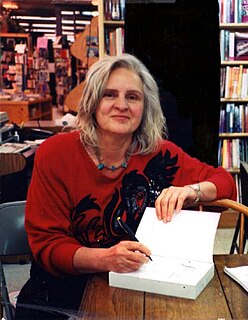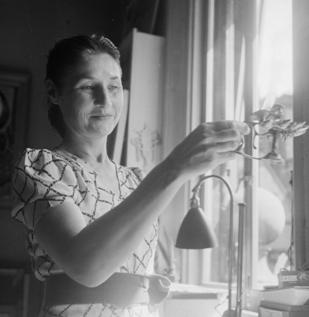Related Research Articles

The Rubik's Cube is a 3-D combination puzzle invented in 1974 by Hungarian sculptor and professor of architecture Ernő Rubik. Originally called the Magic Cube, the puzzle was licensed by Rubik to be sold by Ideal Toy Corp. in 1980 via businessman Tibor Laczi and Seven Towns founder Tom Kremer. Rubik's Cube won the 1980 German Game of the Year special award for Best Puzzle. As of January 2009, 350 million cubes had been sold worldwide, making it the world's top-selling puzzle game. It is widely considered to be the world's best-selling toy.

Surrealism was a cultural movement which developed in Europe in the aftermath of World War I and was largely influenced by Dada. The movement is best known for its visual artworks and writings and the juxtaposition of distant realities to activate the unconscious mind through the imagery. Artists painted unnerving, illogical scenes, sometimes with photographic precision, creating strange creatures from everyday objects, and developing painting techniques that allowed the unconscious to express itself. Its aim was, according to leader André Breton, to "resolve the previously contradictory conditions of dream and reality into an absolute reality, a super-reality", or surreality.

Photomontage is the process and the result of making a composite photograph by cutting, gluing, rearranging and overlapping two or more photographs into a new image. Sometimes the resulting composite image is photographed so that the final image may appear as a seamless physical print. A similar method, although one that does not use film, is realized today through image-editing software. This latter technique is referred to by professionals as "compositing", and in casual usage is often called "photoshopping". A composite of related photographs to extend a view of a single scene or subject would not be labeled as a montage, but instead a stitched image or a digital image mosaic.

Exquisite corpse, also known as exquisite cadaver, is a method by which a collection of words or images is collectively assembled. Each collaborator adds to a composition in sequence, either by following a rule or by being allowed to see only the end of what the previous person contributed.
Surrealism in art, poetry, and literature uses numerous techniques and games to provide inspiration. Many of these are said to free imagination by producing a creative process free of conscious control. The importance of the unconscious as a source of inspiration is central to the nature of surrealism.
Surautomatism is any theory or act in practice of surrealist creative production taking, or purporting to take, automatism to its most absurd limits.

Franklin Rosemont was an American poet, artist, historian, street speaker, and co-founder of the Chicago Surrealist Group. Over four decades, Franklin produced a body of work, of declarations, manifestos, poetry, collage, hidden histories, and other interventions intended to inspire a new generation of revolution, and became perhaps "the most productive scholar of labor and the left in the United States."
Xerox art is an art form that began in the 1960s. Prints are created by putting objects on the glass, or platen, of a copying machine and by pressing "start" to produce an image. If the object is not flat, or the cover does not totally cover the object, or the object is moved, the resulting image is distorted in some way. The curvature of the object, the amount of light that reaches the image surface, and the distance of the cover from the glass, all affect the final image. Often, with proper manipulation, rather ghostly images can be made. Basic techniques include: Direct Imaging, the copying of items placed on the platen ; Still Life Collage, a variation of direct imaging with items placed on the platen in a collage format focused on what is in the foreground/background; Overprinting, the technique of constructing layers of information, one over the previous, by printing onto the same sheet of paper more than once; Copy Overlay, a technique of working with or interfering in the color separation mechanism of a color copier; Colorizing, vary color density and hue by adjusting the exposure and color balance controls; Degeneration is a copy of a copy degrading the image as successive copies are made; Copy Motion, the creation of effects by moving an item or image on the platen during the scanning process. Each machine also creates different effects.

The Rubik's Revenge is a 4×4×4 version of Rubik's Cube. It was released in 1981. Invented by Péter Sebestény, the Rubik's Revenge was nearly called the Sebestény Cube until a somewhat last-minute decision changed the puzzle's name to attract fans of the original Rubik's Cube. Unlike the original puzzle, it has no fixed facets: the centre facets are free to move to different positions.
Gherasim Luca was a Romanian surrealist theorist and poet. Born Salman Locker in Romania and also known as Costea Sar, and Petre Malcoci, he became an apatrid after leaving Romania in 1952.
The Chicago Surrealist Group was founded in Chicago, Illinois, in July 1966 by Franklin, Penelope Rosemont, Bernard Marszalek, Tor Faegre and Robert Green after a trip to Paris in 1965, during which they were in contact with André Breton. Its initial members came from radical left-wing or anarchist backgrounds and had already participated in groups IWW and SDS; indeed, the Chicago group edited an issue of Radical America, the SDS journal, and the SDS printshop printed some of the group's first publications.

Penelope Rosemont a visual artist, writer, publisher, and social activist attended Lake Forest College. She has been a participant in the Surrealist group founded by Andre Breton since 1965. With Franklin Rosemont, Bernard Marszalek, Robert Green and Tor Faegre, she established the Chicago Surrealist Group in 1966. She was in 1964-1966 a member of the Industrial Workers of the World (IWW), commonly known as the Wobblies, and was part of the national staff of Students for a Democratic Society (SDS) in 1967-68. Her influences include Andre Breton and Guy Debord of the Situationist International, Emma Goldman and Lucy Parsons.

Massurrealism is a portmanteau word coined in 1992 by American artist James Seehafer, who described a trend among some postmodern artists that mix the aesthetic styles and themes of surrealism and mass media—including pop art.

Ithell Colquhoun was a British painter, occultist, poet and author. Stylistically her artwork was affiliated with surrealism. In the late 1930s, Colquhoun was part of the British Surrealist Group before being expelled because she refused to renounce her association with occult groups.
Surrealist cinema is a modernist approach to film theory, criticism, and production with origins in Paris in the 1920s. The movement used shocking, irrational, or absurd imagery and Freudian dream symbolism to challenge the traditional function of art to represent reality. Related to Dada cinema, Surrealist cinema is characterized by juxtapositions, the rejection of dramatic psychology, and a frequent use of shocking imagery. Philippe Soupault and André Breton’s 1920 book collaboration Les Champs Magnétiques is often considered to be the first Surrealist work, but it was only once Breton had completed his Surrealist Manifesto in 1924 that ‘Surrealism drafted itself an official birth certificate.’

Collage is a technique of art creation, primarily used in the visual arts, but in music too, by which art results from an assemblage of different forms, thus creating a new whole.
Paul Păun, born Zaharia Herșcovici and who later in life changed his legal name to Zaharia Zaharia, also signed his work Paul Paon and Paul Paon Zaharia. He was a Romanian and Israeli avant-garde poet and visual artist, who wrote in Romanian and French and produced surrealist and abstract drawings. He was also a medical doctor and surgeon. His work is registered with the ADAGP and the SGDL.

Women Surrealists are women artists, photographers, filmmakers and authors connected with the Surrealism movement, which began in the early 1920s.
Collage film is a style of film created by juxtaposing found footage from disparate sources. The term has also been applied to the physical collaging of materials onto film stock.

Valentine Penrose, was a French surrealist poet, author, and collagist.
References
- ↑ "EduWho.com". Archived from the original on December 3, 2008. Retrieved 2007-09-21.
- ↑ Hirsch, Robert (2007). Light and Lens: Photography in the Digital Age . Focal Press. pp. 209. ISBN 978-0-240-80855-0.
- ↑ "Michelles of Delaware: Originals". Archived from the original on 2008-06-28. Retrieved 2007-09-21.
- ↑ Rosemont, Franklin (2003). Joe Hill: The IWW & The Making Of A Revolutionary Working Class Counterculture. Charles H. Kerr. p. 500. ISBN 978-0-88286-264-4.
- ↑ "Fine Art prints 3D Surrealism Pictures Neo-surrealism Art". Archived from the original on 2007-10-28. Retrieved 2007-09-21.
- ↑ "U B U W E B :: Gherasim Luca" . Retrieved 2007-09-21.
- ↑ "Surrealist games - SourceryForge". Archived from the original on 2007-10-11. Retrieved 2007-09-21.
- ↑ Hirsch, p.209
- ↑ Surrealist Experiences: 1001 Dawns, 221 Midnights. Black Swan Press. 2000. p. 125. ISBN 978-0-941194-43-3.
- ↑ "Dain's Blog: Surrealism - The Techniques (cubomania)" . Retrieved 2007-09-21.[ dead link ]
- ↑ "The Rubik's cube history" . Retrieved 2007-09-21.